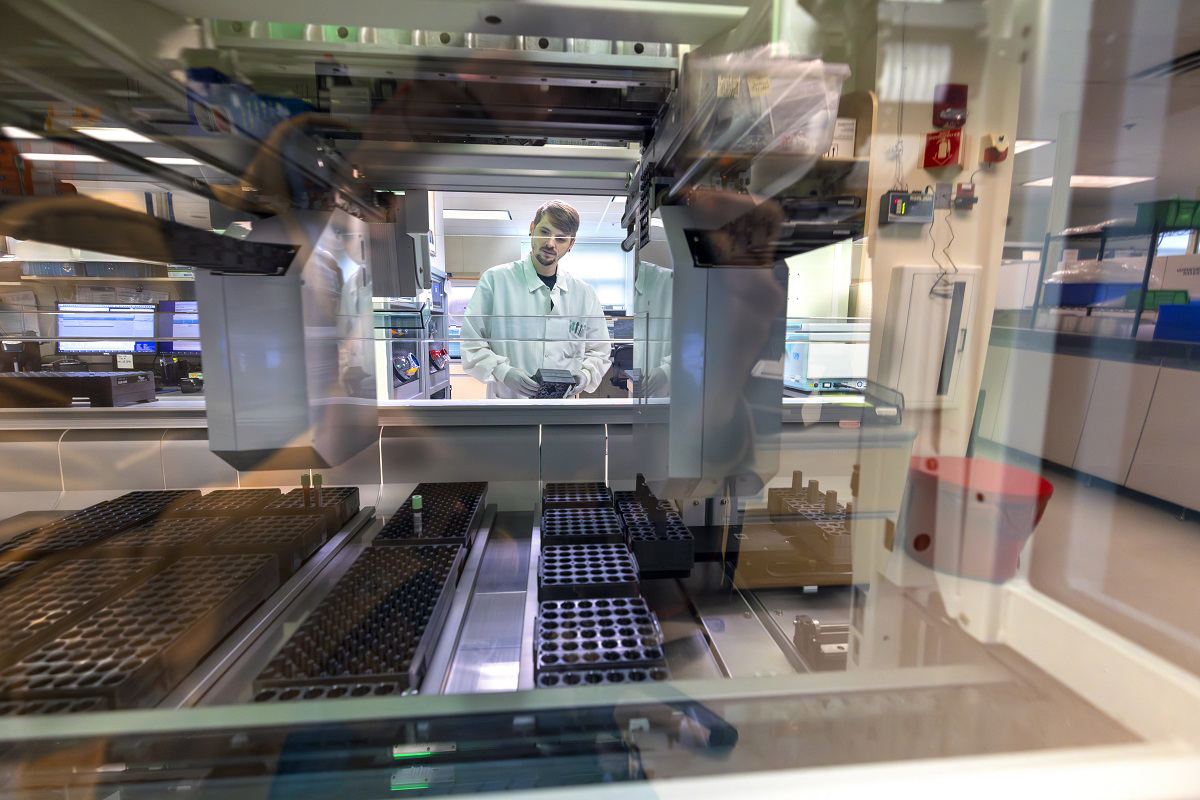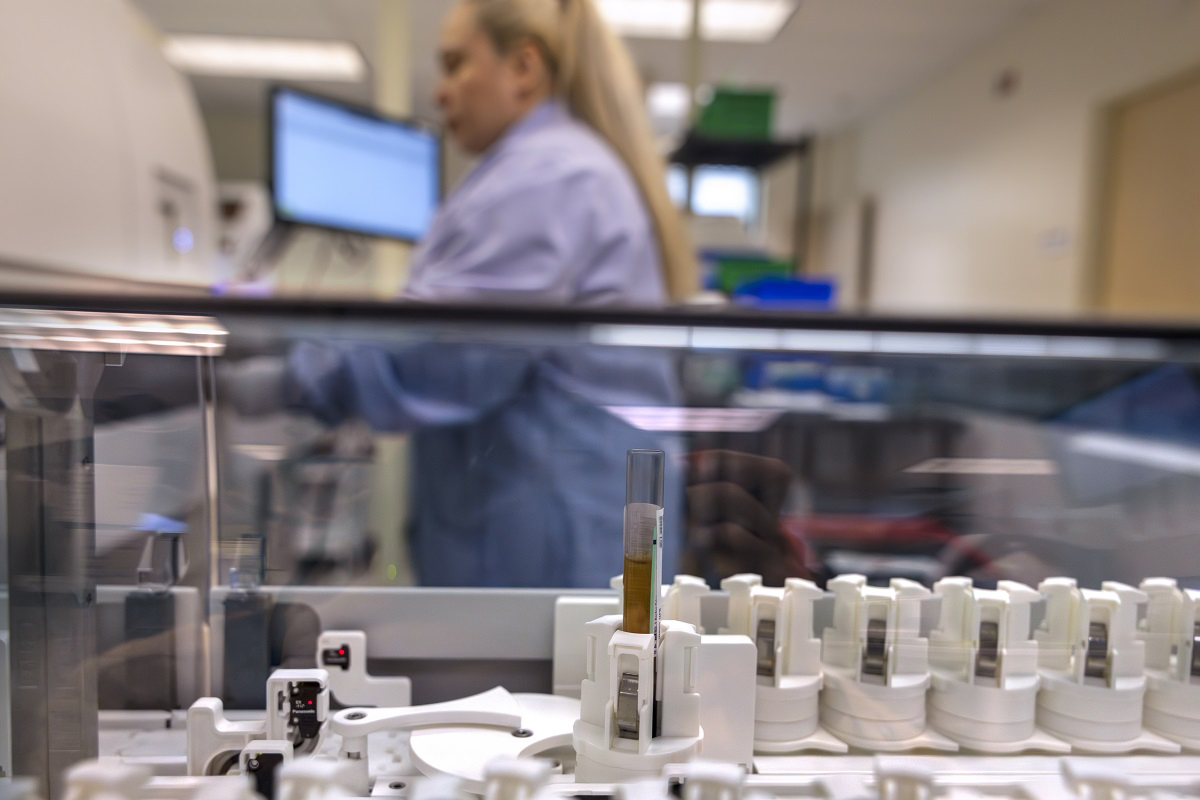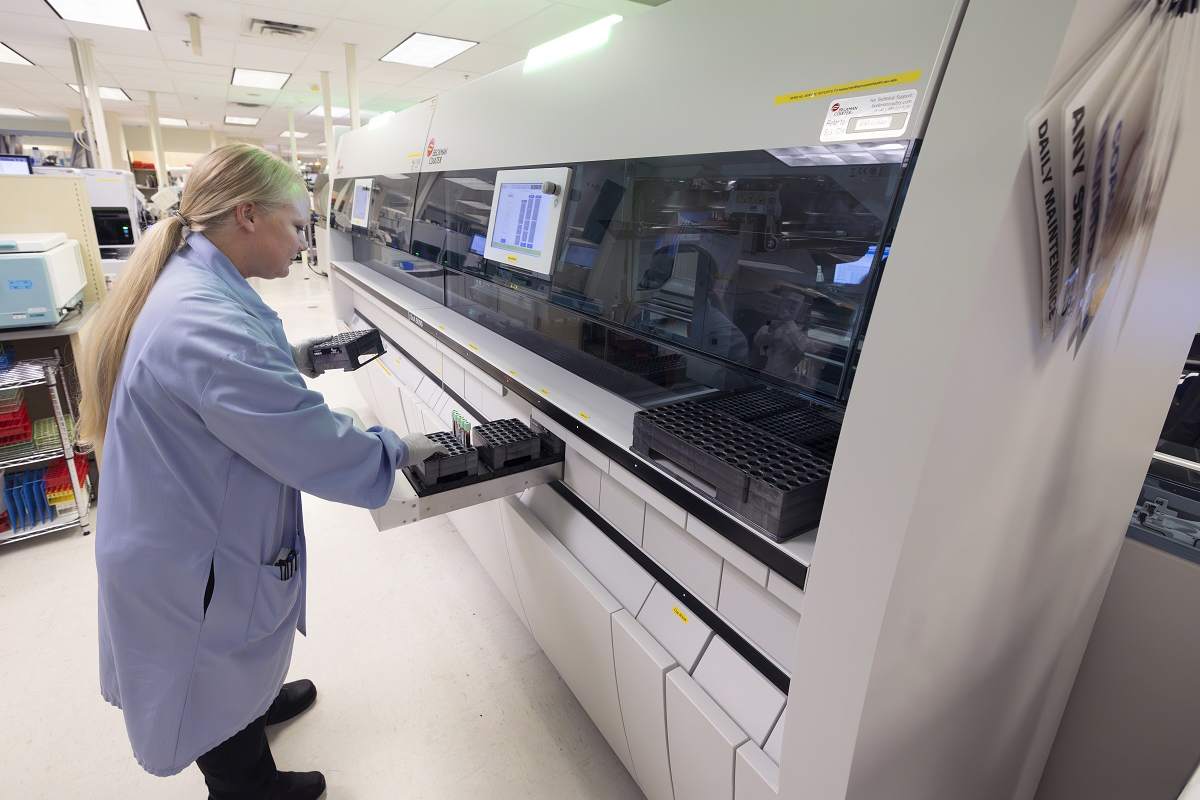St. Joseph Medical Center unveils new automated lab system, significantly increasing capacity

A brand new, $1.5 million upgrade will increase fivefold the capacity of the powerhouse clinical testing lab at Penn State Health St. Joseph Medical Center.
The Beckman Coulter DxA 5000 system, which went live in April, can test 4,500 samples every hour, improving accuracy and alleviating manpower issues at the lab.
“It has the ability to grow the test volumes as well as expand the tests it can run,” said chemistry manager Osiris Urquilla. “Having this automation allows us to keep up with the needs of our health system and significantly expand what we can do inhouse.”
The system received 501(K) clearance from the U.S. Food and Drug Administration in 2019. Linda Gallagher, regional laboratory director for Lancaster and St. Joseph medical centers, and her associates set their sights on purchasing it when it first came on the market. By 2022, they received approval — with the $1.5 million investment fully funded through philanthropic dollars and support guided by the Development Office at St. Joseph Medical Center.
What St. Joseph Medical Center’s lab does inhouse already powers laboratory analysis for much of Penn State Health and beyond. The lab serves over 500 clients, including Penn State Health Hampden, Holy Spirit and Lancaster medical centers and many Penn State Health Medical Group outpatient locations.
Like most areas of health care, recruiting talented staff for hospital laboratories is challenging. Gallagher said automation is one way to address staffing concerns as well as increased demand.
“Our lab personnel will always be our most valuable resource, even with this new, automated system in place,” she said. “This system greatly reduces the number of rote tasks for our lab techs – going from 32 manual steps to just four required for sample processing. It will help us manage our ever-increasing productivity demands, reduce the risks of the most common pre-analytic errors and improve our lab’s performance. And all that creates a much more positive working environment for our team.”
The future of high-volume labs
The tracks of the Beckman Coulter DxA 5000 system are laid out in four lanes — resembling a futuristic mini-highway — that transport test tubes to different chemistry analyzers on the line. The new equipment can differentiate 100 tube types and uses artificial intelligence to determine the most efficient route to get a tube to its intended station.

Osiris Urquilla, lab chemistry manager at Penn State Health St. Joseph Medical Center, checks on the new lab equipment.
“It has these built-in crossroads that allow for STAT testing prioritization,” Gallagher said. “For example, with cardio biomarkers for AMI [acute myocardial infarction], that’s a STAT order, and the line will send it first because it recognizes the critical time sensitivity for the patient.”
All of the automated instruments are connected to the line for testing. And the chemistry analyzers have the ability to do “a lot of testing with just a small amount of blood,” Gallagher said. The new equipment also will improve the chemistry performance, she added, noting that “the assays have enhanced accuracy and precision, and many assays have attained the Six Sigma designation.”
The automated system will send the test tube to one area for a test, then to another area for another test and so on as needed. At each stop, the equipment scans the tube’s bar code and uploads the status to the main tracking system, which is monitored by lab technicians.
“It’s kind of like FedEx, providing us with real-time information every step of the way,” Gallagher said.
Tests that are automatically verified are released by the system into the patient’s electronic medical record and available to the provider for review. But lab techs continuously monitor the system’s operations for any abnormal results and any tests that aren’t automatically verified.
When all the ordered testing on the automated line is completed, the system will route the test tube to a refrigerated “stockyard” for storage. If needed, lab technicians will remove the specimens from the stockyard to run any requested tests that are not on the automated line.
A tube will remain in the stockyard until a preset time, when it will automatically be sent to a waste bin beneath the unit for disposal.
The super-high-tech system required extensive training for its operators. Penn State Health sent Urquilla and two other team members—Troy Wunder, and Michelle Smith, lead technologist—to California to train on the line. They continued their training at St. Joseph Medical Center and are now training other lab techs on the equipment that has been installed in St. Joseph Medical Center’s laboratory.
Area testing hub
In addition to serving inhouse testing needs as well as testing for Penn State Health’s urgent care locations in Berks County and Penn State Health Medical Group practices throughout Berks and Lancaster counties, the lab at St. Joseph Medical Center is the reference lab for its community hospitals in Cumberland and Lancaster counties. When inhouse labs at those hospitals can’t manage certain tests, health system couriers run test specimens to St. Joseph Medical Center for processing.

Michelle Smith, lead technologist at Penn State Health St. Joseph Medical Center, demonstrates the lab’s new, automated system.
Reference labs, with their economy of scale and specialized equipment, help health systems manage their lab services more efficiently.
Outside of the health system, the lab provides testing for area nursing homes, assisted and skilled living facilities, an independent surgery center and an independent rehabilitation facility. It also provides consortium services for employers that participate in random employee drug and alcohol testing. All of this testing brings increased revenue to the health system.
“Only about a quarter of the work we do is for our inpatients here at St. Joseph Medical Center,” Gallagher said. “We have a very large outpatient business. And now with this new equipment, we’re able to reach more patients and serve more clients with faster and enhanced analytic technologies.”
If you're having trouble accessing this content, or would like it in another format, please email Penn State Health Marketing & Communications.
